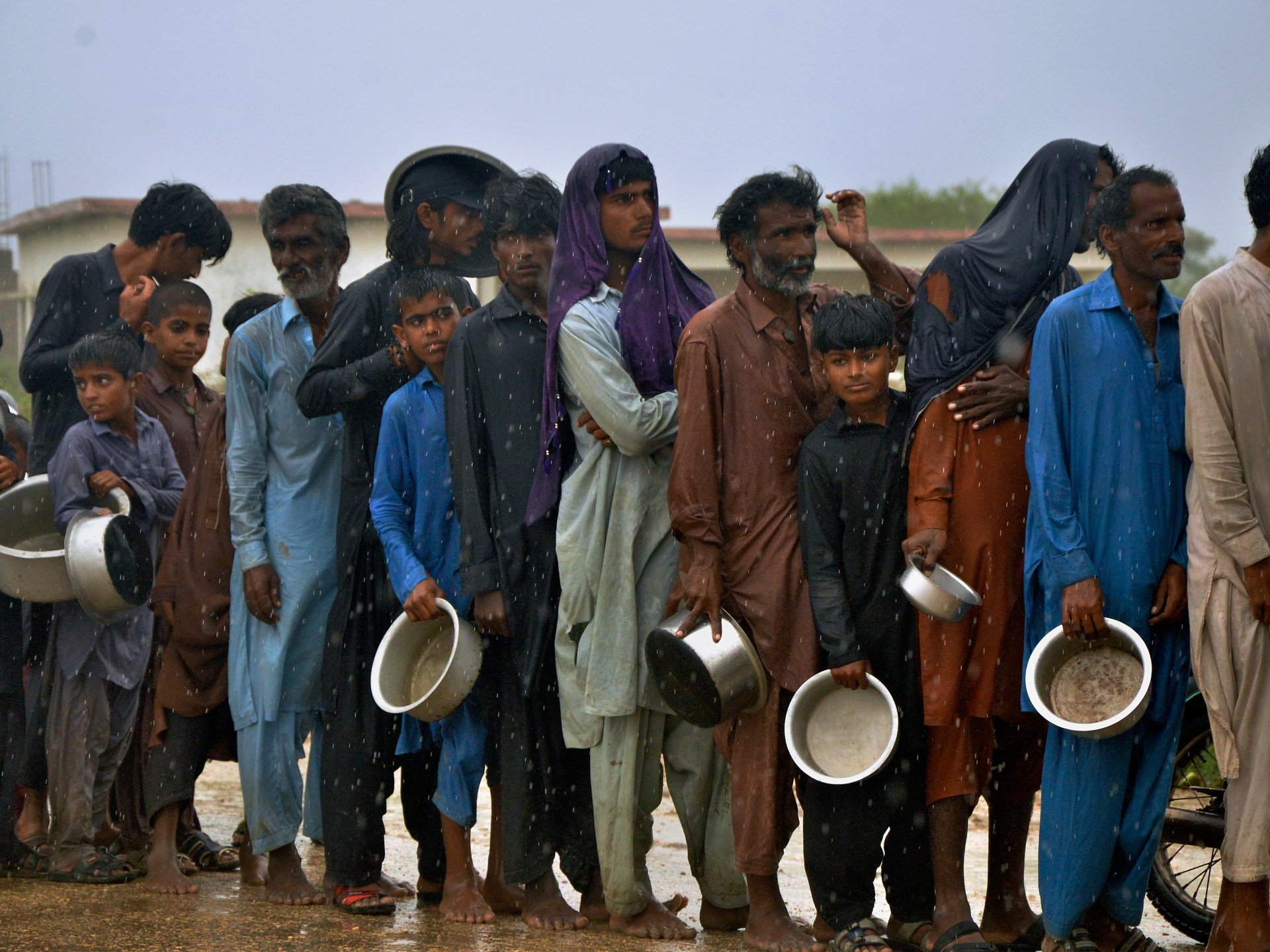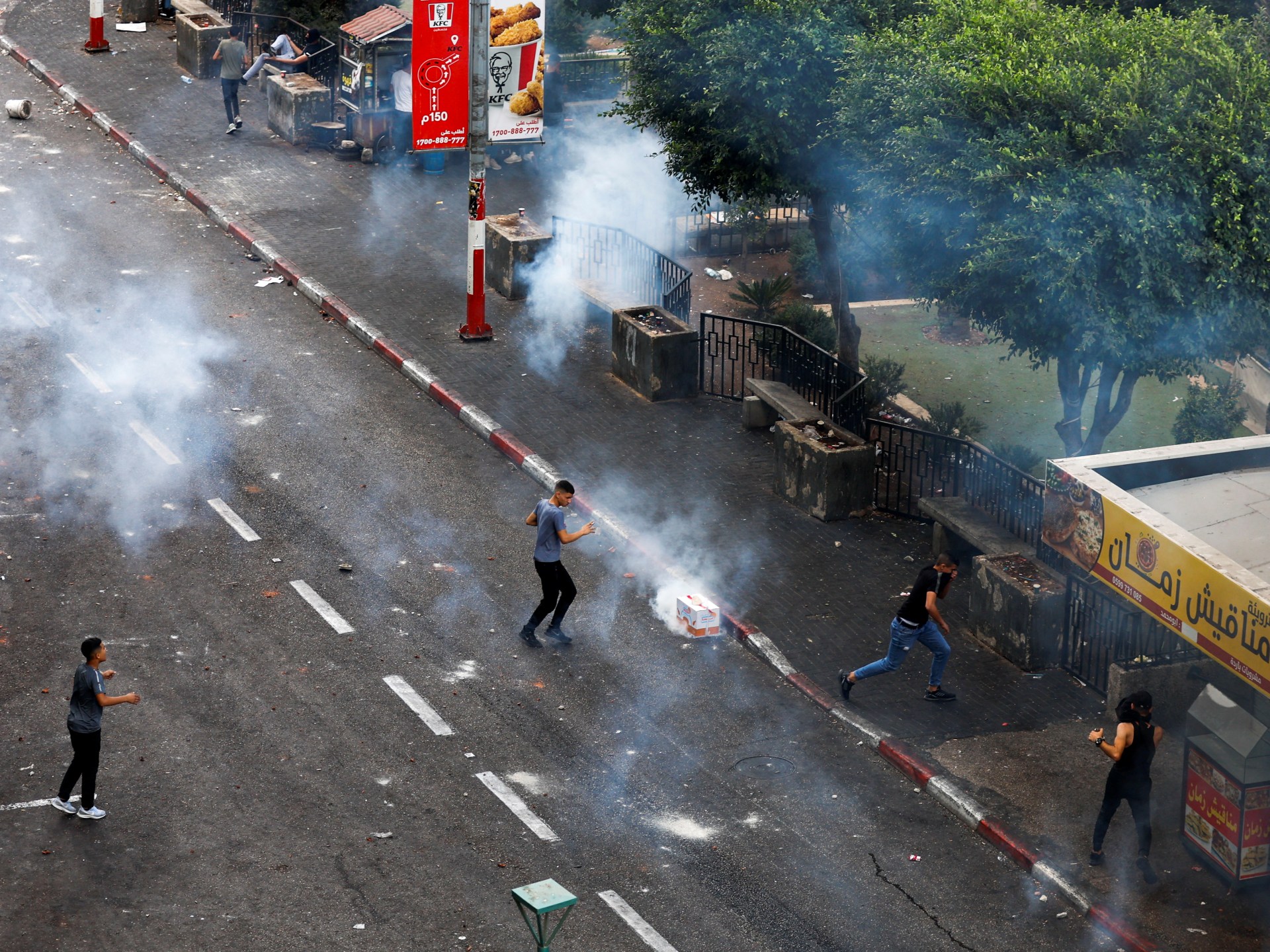Slavery is back in Pakistan, thanks to climate change | Climate Crisis
This spring, I spent time with farming families across rural Sindh and the Kacchi Plains of Balochistan, the two worst-hit regions by last summer’s super floods that submerged a third of Pakistan, displaced eight million people, and saw millions more lose their livelihoods.
Six months after the monsoons, I saw field after field still under water. Elsewhere, the soil was too damaged for sowing seeds. Yet, the small and landless tenant farmers I spoke with, facing another lost crop cycle, were as concerned about being stripped of their liberty as about displacement and hunger.
Pakistan has introduced measures against modern slavery with mixed success. Climate change, however, is reinforcing the most egregious abuses due to mounting personal debt, and the economic relationship between sharecroppers and small farmers on the one hand, and landlords and local merchants on the other.
While sharecropping has declined significantly in Pakistan’s largest and wealthiest province, Punjab, it continues in more rural Sindh and Balochistan. Tenant farmers borrow to cover the expenses of a crop cycle. Since loans from microfinance banks require collateral and identity documentation, farmers prefer less formal arrangements with a landlord or local moneylender.
Landlords and sharecroppers split the costs of cropping, with the former providing credit for seeds, fertilizer, and other inputs. The farmer repays the landlord out of the profits from the yield. If the income is insufficient, the debt is rolled over to the following harvest. Successive years of crop failure create interminable cycles of debt, which are transferred from generation to generation: Many sharecroppers are still paying off their ancestors’ loans.
Powerful landlords even detain their indebted farmers in private prisons until they repay through unpaid labor, only occasionally resulting in police action. By some estimates, more than three million Pakistanis are trapped in debt bondage.
Small farmers, meanwhile, risk losing their land to local merchants and moneylenders, who charge interest rates as high as 40 percent for loans. The high interest means that “if the crop fails even once, you are in a debt trap”, one activist and academic in the Kacchi Plains told me.
The terms of the loan require that the farmer’s harvest be sold exclusively to the moneylender. Should the yield not cover the loan’s value, the lender often summons an informal council, overseen by tribal or local elites, to call for an ownership transfer of the debtor’s land.
“Heat waves and floods are a major opportunity for the merchant,” the activist-academic said. “This is when he can acquire land at the cheapest rate.”
The 2022 floods destroyed several crop cycles well into 2023, compounding farmers’ debts to predatory lenders, and dispossessing many of their land. Several farmers I spoke to had unsuccessfully lobbied landlords to reduce their dues. Based on court case filings, local activists and rights organizations say that the 2022 floods have pushed many more people into bonded labor – despite national and provincial laws against the practice. This summer’s monsoons, during which over 100 people died in weather-related incidents, will only compound the crisis.
Women farmers are especially vulnerable. According to a 2018 UN Women report, 60 percent of women’s agriculture work is unpaid. Women do most of the cotton picking in the country – Pakistan is the world’s fourth-largest cotton producer – and a lucrative textile industry benefits from their labor in unsafe conditions and for “slave wages”, as a local lawyer and activist who campaigns for cotton farmers’ rights in Sindh described it to me. The 2022 floods destroyed Sindh’s cotton belt, eliminating even this meager income and making it still harder for those women to repay their debts.
Floods aren’t the only problem: During heat waves, some Sindh and Balochistan districts see temperatures hover near 50 degrees Celsius, decimating the cotton crop. In Jacobabad, one of the world’s hottest cities and part of Pakistan’s rice belt, rain delays have shifted the time of rice cultivation from May until August. This is preventing the rice from ripening in the summer and severely eroding its quality.
Sindh’s southeastern Thar region, near the Indian border and predominantly Hindu, saw a massive drought between 2015 and 2018, forcing farmers into protracted seasonal migration, during which they tilled big landlords’ lands. Most were from underprivileged castes and, as a victimized demographic within an already marginalized minority community, particularly vulnerable to exploitation.
In 2019, I co-authored a study supported by the United Kingdom government, which found that when migrant farmers tried returning home to Thar after the drought ended, landlords prevented them – on the pretext that they owed several years’ worth of rent, which had to be recouped through unpaid labor.
Prolonged drought thus created a new generation of bonded laborers in one of the most neglected parts of the province, even spawning a wave of suicides since the drought began – mostly among young, underprivileged caste women. And this worrying trend is not unique to Pakistan: An agrarian crisis in India’s western Maharashtra state has driven tens of thousands of women, burdened with debt, to suicide in recent years.
Urban migration offers an escape to some. Last year’s floods prompted many Thari migrants to move to Pakistan’s megacity, Karachi, where a large number still reside under bridges and in construction sites. Many told me they favor these conditions over debt bondage, unpaid labor, and other abuses at the hands of landlords. Others are willing to risk the cruelties of illegal migration.
At COP27 in Sharm El-Sheikh last November, Prime Minister Shehbaz Sharif made a poignant case for debt relief and compensation for a nation that, while facing a major external debt crisis, was just starting its long recovery from one of the most catastrophic floods in recent memory.
No doubt this informed the creation by the end of the conference of a climate loss and damage fund for vulnerable countries, the result of an admirable political mobilization in the Global South around climate justice. But if greater access to climate financing is to address the full costs of global warming in Pakistan, the politics around climate action at home has to be more inclusive, too.
It will require significant political will for the state to act against large landlords in Sindh and Balochistan, many of whom are either elected to provincial assemblies or are otherwise important local powerbrokers. Everywhere I went in Sindh and Balochistan, communities were bristling with anger and ready to speak out. They need support from the press, activists, the legal community, and civil society at large to turn that anger into public pressure on the government to apply laws against bonded labor, people trafficking, and certain types of debt.
Several stakeholders have argued that Pakistan, which just received a long-delayed International Monetary Fund bailout, is a good candidate for debt relief or debt restructuring as a form of reparation from the Global North to nations in the Global South most affected by global warming.
But there is a much darker connection between climate and debt in the most disaster-prone parts of the country. And it’s a modern slavery issue that demands our immediate attention.
The views expressed in this article are the author’s own and do not necessarily reflect Al Jazeera’s editorial stance.





